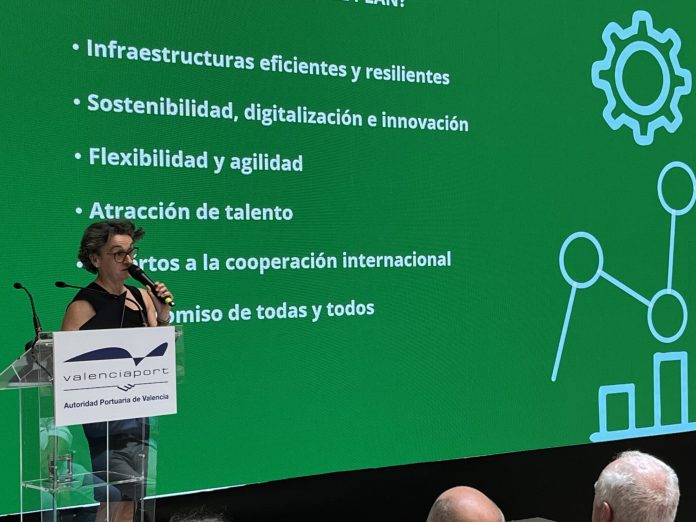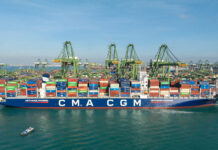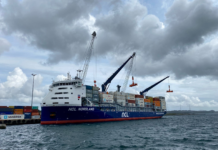
Valenciaport has launched its Strategic Plan 2035, outlining a bold roadmap to solidify its role as a key engine of Spain’s economy and a trusted partner for businesses and society.
Presented at the historic Clock Building of the Port of Valencia, the plan sets out a clear long-term vision designed to transform the port into a global logistics leader by the year 2035.
Spanning the next decade, the Strategic Plan aims to position Valenciaport as a driver of investment, job creation, and technological advancement in the port and logistics ecosystem.
One of its core ambitions is to handle up to 45% of Spain’s loaded container traffic for imports and exports by 2035. To achieve this, rail transport will play a pivotal role, with the goal of moving nearly 17% of containers entering or leaving the ports of Valencia and Sagunto by train.
At the same time, road haulage will continue to serve as a vital link in the logistics chain.
The plan projects that Valenciaport’s terminals will help create around 80,000 jobs and mobilise €40 million in digitalisation projects. These efforts aim to place the port at the forefront of the global logistics sector, aligned with both the Strategic Framework of the Spanish Port System and the United Nations Sustainable Development Goals.
As explained by Mar Chao, President of the Port Authority of Valencia, the strategy is not just a technical document but a collective commitment.
A cornerstone of the plan is the optimization of port and logistics infrastructure to meet evolving trade demands. Major projects include the new North Terminal, a sustainability and technology benchmark; enhanced rail access to the ports of Valencia and Sagunto; and full development of strategic logistics hubs such as ZAL and Fuente de San Luis.
Also, Valenciaport is advancing its Net Zero Emissions strategy by promoting renewable energy, shore power supply, alternative fuels, and carbon offsetting measures. It will also develop green corridors, support the Hydrogen Valley in Sagunto, and invest in climate adaptation projects to build a greener, more resilient port model.
Meanwhile, the Plan calls for the creation of a digital twin of the port, full digitalisation of operations, and the establishment of an open innovation ecosystem. It also places a strong emphasis on inclusion, dual vocational training, and improving port-city relations in Valencia, Sagunto, and Gandia by fostering citizen engagement and community-facing development.
The plan’s development was grounded in a thorough diagnosis of international maritime trade trends and global port system challenges—including digitalisation, energy transition, and logistics chain disruption.




